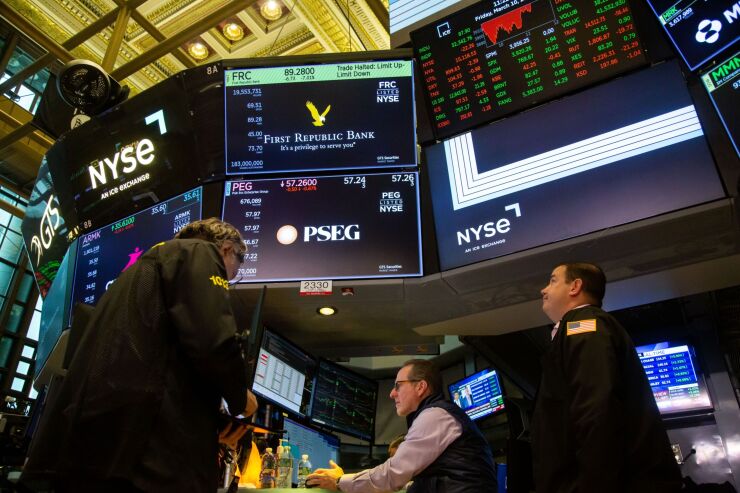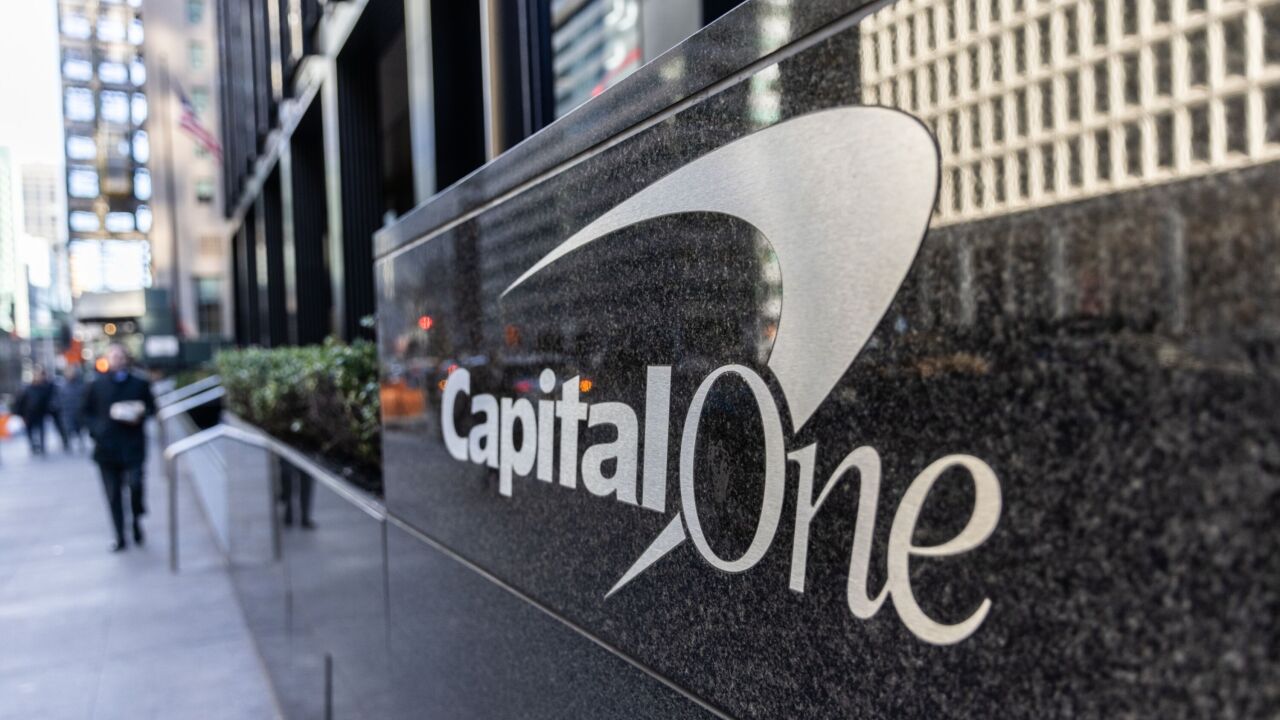
"It's a Wonderful Life" is one of those movies that most people under the age of 60 have seen but never actually watched. It's on every December, and one can't help but soak in 10-15 minutes of it a year, every year, over the course of a lifetime.
Perhaps the most iconic moment in the film — certainly for bankers — is the
"You're thinking about this place all wrong, like I've got the money back in the safe. Your money's not here," waves Bailey. "It's in Joe's house — now, that's right next to yours. And the Kennedy's house and the Smeglin's house, and a hundred others. Now, you're lending them the money to build, and they're going to pay you back as soon as they can. And you want to foreclose on them?"
This is the platonic ideal of how banking is supposed to — and on some level, does — work. You put your money into a bank, and while you're not using it, the bank lends it to people who can use it to do useful things. Over time, those loans get paid back with interest, and the depositor likewise gets paid back with interest and the bank keeps a little off the top for its trouble.
That system relies on a few essential ingredients: capital, risk and trust. First, you need capital to make and underwrite loans. You need some element of risk for that capital to be lent out in such a way that it can make a return on the investment, and while the loan is out the depositors have to trust the bank to stay in business long enough for the depositors to get their money back. But sometimes you get what George Bailey got — a run.
In the case of BBB&L, a sizable investor (Mr. Potter) consolidated its position, and in doing so sapped the bank of its liquidity. The S-banks, by contrast, put themselves in a far less sympathetic position. They had fickle deposit bases that either ran or were running, forcing the banks to sell assets for a loss. Better banks have failed for less.
What got my attention — and has kept my attention since — is the extraordinary length that regulators went to, to nip those failures in the bud. The "systemic risk exception" is a specific action that the Federal Deposit Insurance Corp. has to vote on and approve and the Treasury secretary has to execute — it's not meant to be easy to do, much less on a cold and rainy Sunday evening. In fact, in the 32 years since the systemic risk exception has existed, it has been invoked exactly twice: 2008 and 2023.
Why did they do that? I suspect that the concern was that a run was brewing, and runs have a mind of their own. I think that was probably wise — it's a lot easier in the long term to take the political hit, figure out what went wrong and use the episode to advance a
More to the point, there are a lot of long-dated underwater securities out there that banks would rather not be in a position of having to sell. That's a problem that can be managed, but managing it is far more difficult when your depositors are all demanding their money back.
Over the coming months we will learn with specificity how the S-banks were able and allowed to put themselves in such a precarious position, and there is plenty of blame to share between the banks and their supervisors. It's also reasonable to expect that regulators will make capital and liquidity rules tougher and more broadly applicable than they have been recently. Indeed, Federal Reserve Vice Chair for Supervision Michael Barr is already undertaking a
But it's worth taking a moment to appreciate how retro a problem this bank run is, how unprepared the banks or the regulators were to face it and the great lengths to which regulators had to go to keep it from spreading. It's like being suddenly attacked by a saber-toothed tiger — sure that's something we used to deal with all the time, but you would be right to assume that we've long since solved that problem.
Deposit insurance was purpose-built to keep this kind of thing from happening, and the fact that such an outsize proportion of deposits — not just at the S-banks, but
But what is really required — what needs to be articulated — is a permission structure for the banking public to trust their banks again. George Bailey did it in a pinch by giving customers — shareholders, actually — concrete examples to their faces of how his institution improved their lives, met their needs, understood their privations. He was a friend, and he was asking his friends for their trust.
"Now, we can get through this thing all right," Bailey pleads. "We've got to stick together, though. We've got to have faith in each other."
Customer trust was shaken over the last week. The question is how quickly — and at what cost — can regulators and the banking industry win it back.






